Summary
- Left 4 Dead introduced a 4-player co-op to survival horror, shaking up the genre’s expectations.
- The Evil Within 2 successfully merged open-world elements with traditional survival horror.
- Haunting Ground experimented with a bond and panic system for a unique twist on solo horror adventures.
The survival horror genre has always had a pretty basic blueprint to follow. The gameplay loop of scavenging every last bullet to make it to the next safe room results in an intense experience that can easily invoke fear into even the most seasoned horror fans, though not every game in this popular sub-genre has followed this trend. While some will shake up the formula entirely, others have implemented specific features and mechanics that make them very unique, and pretty experimental, because of how ambitious they are in trying to create something brand new.
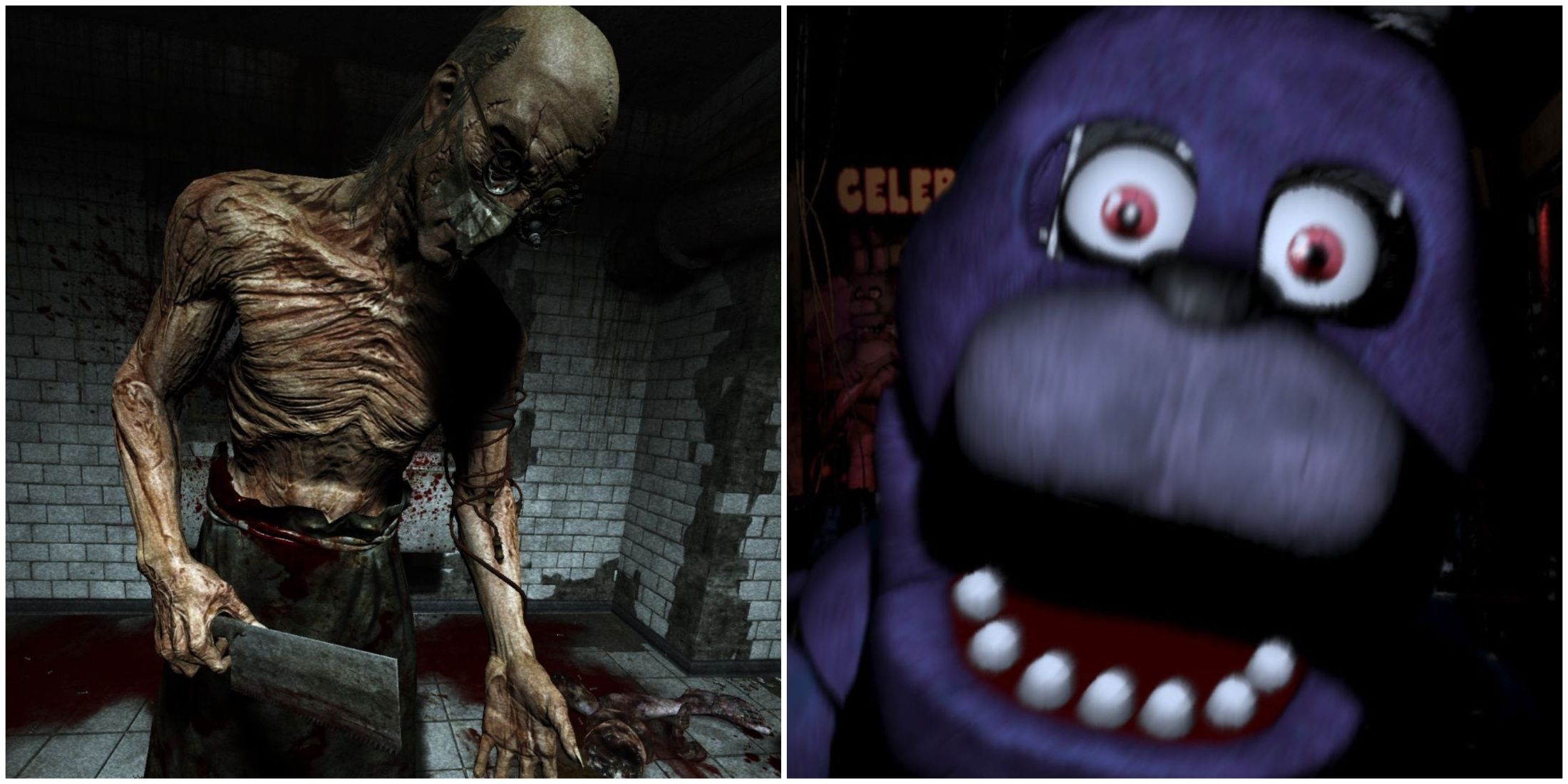
Related
8 Best Survival Horror Games With No Combat
Not all horror games allow gamers to fight back; here are some of the best survival horror titles that do not feature combat.
This is far from a bad thing though, considering the genre would remain pretty stale if every game was simply a clone of the first Resident Evil or Alone in the Dark. Thankfully, though, the genre continues to evolve thanks to the risks developers will decide to take in order to build upon the core components of the genre, despite the fact there’s always a chance they could backfire.
8
Left 4 Dead
Valve’s First Fully-Fledged Horror Game Introduced 4-Player Co-Op To A Genre Known For Being Singleplayer
While Valve had already implemented small aspects of horror into their games, specifically the Half-Life series, their first true horror game would be Left 4 Dead, and it’s fair to say this title shook up almost everything about the survival horror genre at the time. Not only did it feature 4-player co-op in a sub-genre that was usually confined to being only singleplayer, but the zombies the game uses are also lightning-fast, as opposed to many other games where they are depicted as being slow, sluggish, and less of a worry.
On top of that, Left 4 Dead also decided to offer players 4 campaigns to embark on, meaning while it doesn’t technically have a single narrative, it gives players the option to jump into smaller stories for a quick fun play session. Valve certainly wasn’t shy about putting their own unique mark on the survival horror genre, but thankfully, their efforts paid off as the experimental Left 4 Dead would go on to become one of the most beloved horror games ever made.
7
The Evil Within 2
Merging The Open-World Genre With Survival Horror Was A Gamble The Evil Within 2 Was Willing To Take
- Released
-
October 13, 2017
- OpenCritic Rating
-
Strong
In the leadup to The Evil Within 2’s release, the sequel to the fairly divisive original game was advertised as being a sort of survival horror open-world hybrid. Despite the open-world genre being at peak popularity when The Evil Within 2 was released, merging the two had never really been successfully executed before, but this game took an ambitious stab in the dark and ultimately managed to pull it off pretty well.
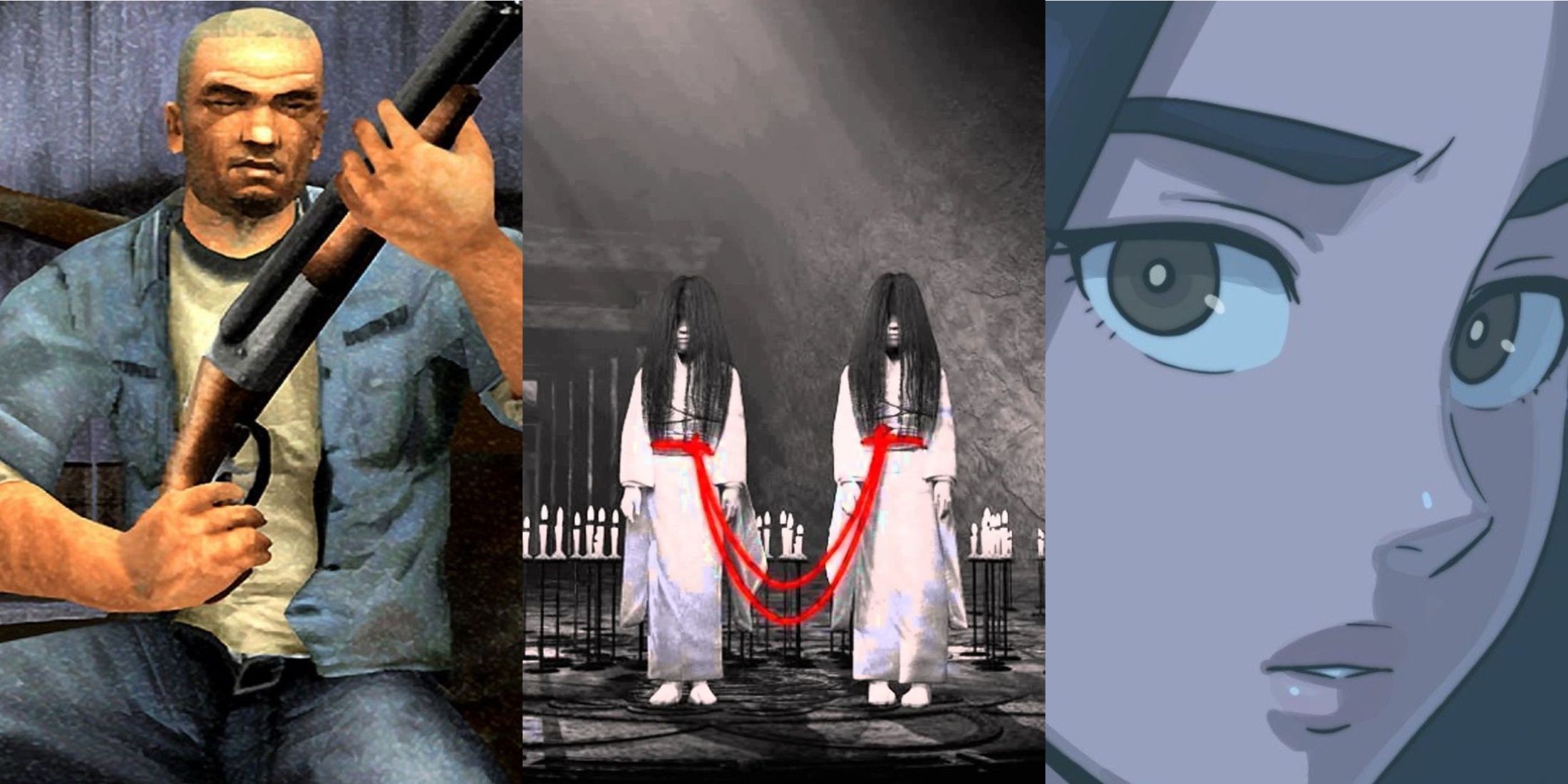
Related
7 Survival Horror Game Franchises That Were Killed Off Too Quickly
These brilliant horror games had lots of potential, but their franchises died before they got to unleash that potential in its full.
The game features large open-hub areas Sebastian can explore to find new weapons, gear, and even side-quests which will earn him extra goodies. In keeping with the horror focus though, these areas are scrambling with zombie-like enemies who will grow and evolve as the game progresses, forcing players to question whether they really want to go through all that stress just to get a new sniper rifle or shotgun. The Resident Evil series may have dabbled with this kind of system before by giving players large open areas to explore, but The Evil Within 2 goes even deeper thanks to its side missions and substories that deviate from the original plot a fair bit.
6
Outlast
Outlast’s Camera Mechanic Adds So Much Immersion To The Creepy Core Gameplay
- Released
-
November 4, 2013
- OpenCritic Rating
-
Strong
As players navigate their way through the dark and dreary corridors of Mount Massive in Outlast, they’ll need to rely on their trusty camera to see where they’re going, so long as they have enough power left, that is. The camera is a mechanic that Outlast uses to add an extra layer of tension to the gameplay, since using it for too long will eat up the batteries, meaning players must desperately try to find more to avoid being stuck in a dark room surrounded by bloodthirsty maniacs.
Relying so heavily on this one tool could have easily backfired, but it ended up making Outlast all the more immersive, and a classic in the eyes of many horror fans. Creeping through the darkness may be nothing new in survival horror games, but having the ability to see the horrors from afar through a camera is a clever way to subvert people’s expectations.
5
Haunting Ground
Capcom Experimented With A Bond And Panic System For Haunting Ground
In many survival horror games, players will be forced to venture forth all by their lonesome, and though they might meet some characters here and there, having a solo adventure is often seen as an effective way to build suspense and tension throughout a playthrough. In Haunting Ground, though players control Fiona, who is unable to engage in combat, she also has her newfound canine companion called Huey by her side, with whom she can build a relationship by performing certain actions and keeping him safe.
Alongside this unique relationship mechanic, which affects Huey’s actions in-game and even the ending players will receive, Haunting Ground also features a Panic mode where players will lose control of Fiona if she gets too startled. This kind of feature had already been seen in Clock Tower 3, but players still at least had some control of Alyssa in that game, whereas here, it gives Fiona a mind of her own. These two systems result in Haunting Ground being a unique entry in Capcom’s extensive horror catalog and one that encourages players to think about more than simply picking up bullets and weapons.
4
Until Dawn
Players Choices Matter More Than Ever In This Interactive Survival-Horror Title
Until Dawn is essentially split up into two gameplay formulas. For certain sections of the adventure, players can freely roam around their environment, picking up Totems and items as they go, but there will also be intense moments where they are forced to make decisions that hold the potential to drastically change the course of the story.
In this sense, the ‘survival’ aspect comes from the player’s choices, since something as simple as splitting up from the crew or missing a shotgun blast can result in a character’s death. This kind of interactive gameplay had never been seen before at this level but would become so popular that it spawned an entire anthology of titles that continue the trend.
3
Alien: Isolation
Alien Isolation Ditches Enemy Variety For One Highly Intelligent Stalker
- Released
-
October 7, 2014
- OpenCritic Rating
-
Strong
Most survival horror games will try to feature a plentiful variety of enemy types to prevent the experience from ever becoming too predictable. However, Alien Isolation ditches this idea to instead hone in on the iconic Alien itself, who stalks Amanda throughout the entire game. What is most fascinating about the Alien is its AI, and how it is able to adapt to the player’s behavior to ambush them and cut them off whenever they try to hide.
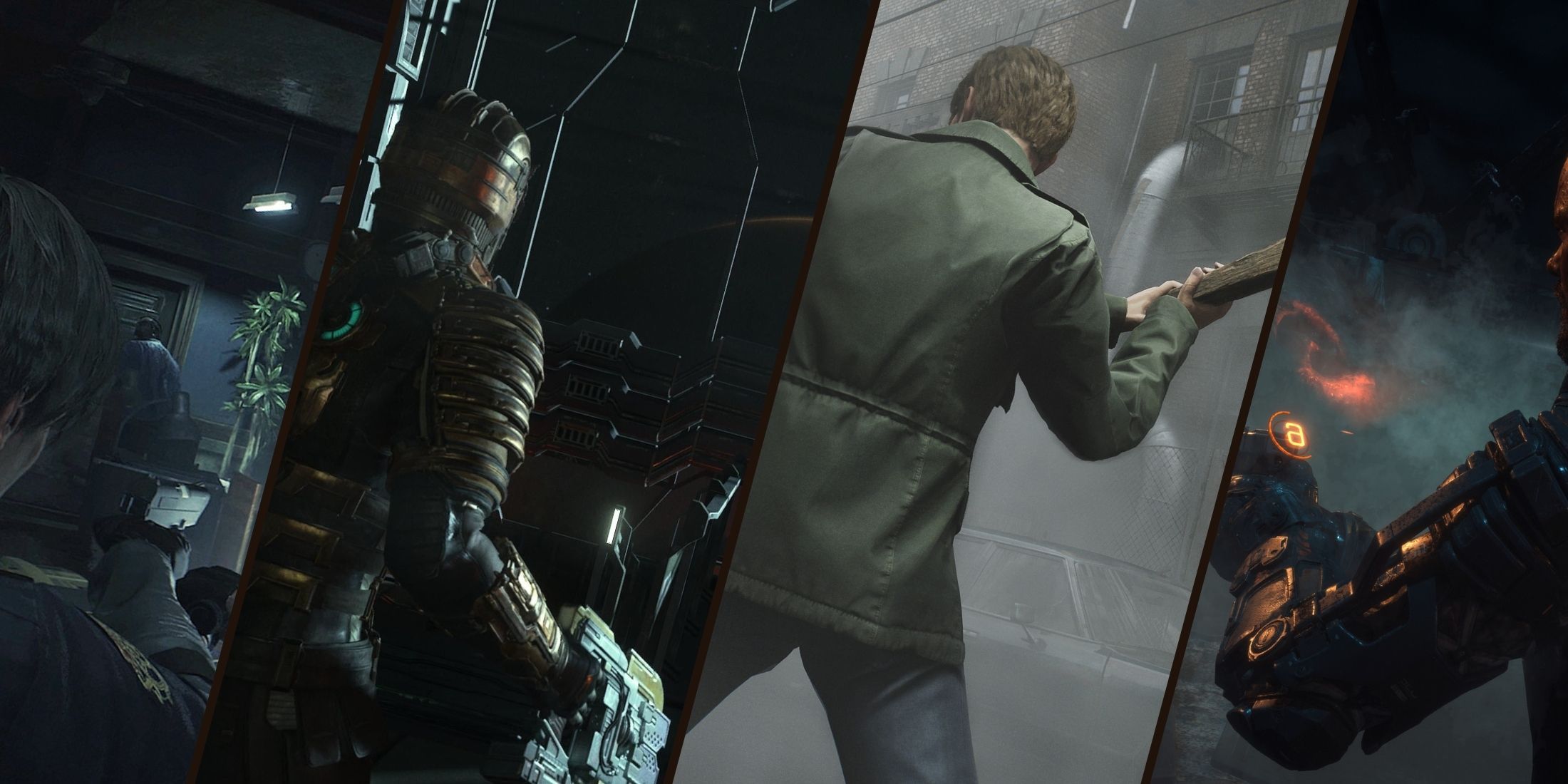
Related
5 Most Satisfying Weapons In Survival Horror Games
Some weapons in survival horror games are more enjoyable to use than others. Here are the most satisfying of the bunch.
It was certainly a gamble to put so much focus on this single enemy since there was always a chance players would have found it too repetitive, even if a few robots were still thrown in here and there to try and spice things up. Luckily though, this gameplay formula worked remarkably well considering how eerily real and unpredictable the Alien would be, learning more about the player the longer the game goes on.
2
Resident Evil 4
No One Expected Capcom To Toy Around With Resident Evil’s Camera Angles To This Degree
- Platform(s)
-
PS4 , PS3 , PS2 , Xbox One , Xbox 360 , Switch , Wii , Nintendo GameCube , PC , Android , iOS
- Released
-
January 11, 2005
- OpenCritic Rating
-
Strong
Though third-person horror games are nothing new these days, it’s hard to emphasize just how unorthodox this was back in the early to mid-2000s. While Resident Evil had still been the figurehead of the survival horror genre, the series had begun losing steam due to Capcom refusing to switch up the classic design of fixed camera angles and long loading screens that broke up the immersion.
While they could have easily continued pumping out Resident Evil games in this style, Capcom decided to listen to the fans and try something entirely different for the fourth mainline game. With the camera angle now hovering over Leon’s shoulder, it made players feel as though they were there for the ride, while also making the enemies much more terrifying as there was no telling whether they were coming from behind or not. Resident Evil 4 would also make the risky choice to lean more into action which, just like the third-person camera, would go on to be replicated by a plethora of other future survival horror games, including Dead Space.
1
Alan Wake 2
Alan Wake 2’s Ambitious Gameplay Mechanics Feel Like Unique Evolutions Of The Survival Horror Blueprint
- Released
-
October 27, 2023
- OpenCritic Rating
-
Mighty
To call Alan Wake 2 an ambitious game would be a huge understatement, but then again, nothing less would be expected from the folks over at Remedy. Though the game clearly has survival horror roots at its core, with players fending off creepy enemies while also trying to stock up on ammo and health, the inclusion of Saga’s Mind Place and Alan’s Writer Room make the game feel like an experimental evolution to the longrunning gameplay loop.
Players can enter both of these locales with either character any time they wish, and while Saga’s room will be an area where she can piece together clues and evidence to figure out a case, Alan’s features a typewriter he can use to alter and edit his environments by writing a story. Alan Wake 2 feels like a survival horror game that almost breaks into a different genre entirely, but this level of experimentation ultimately resulted in the game being seen as one of the greatest of 2024, and a breath of fresh air for survival horror as a whole.
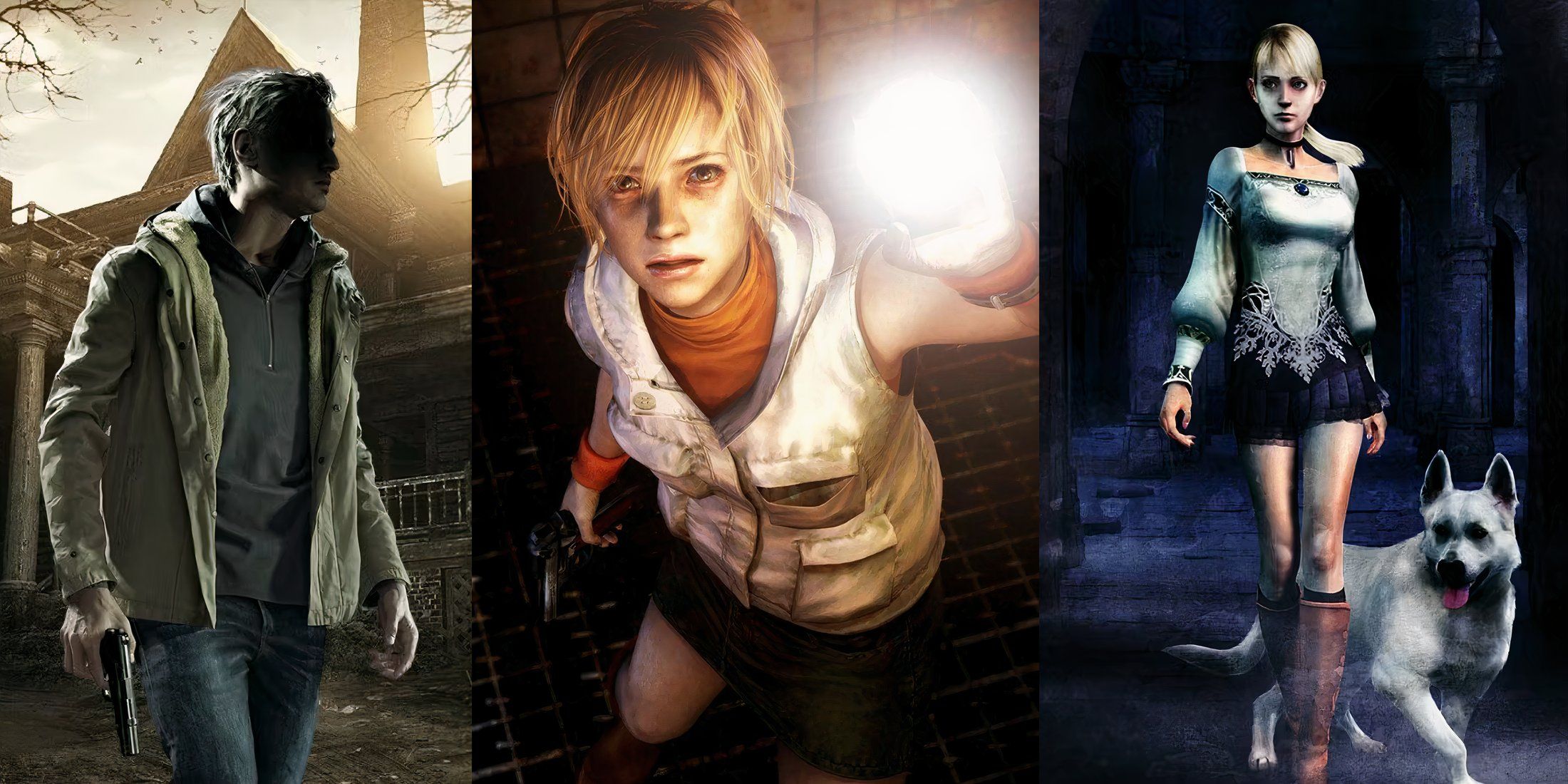
Related
Best Survival Horror Games Featuring Reluctant Heroes, Ranked
Not every protagonist is eager to save the day and themselves. These survival horror heroes have been put through the wringer to become who they are.
Source link
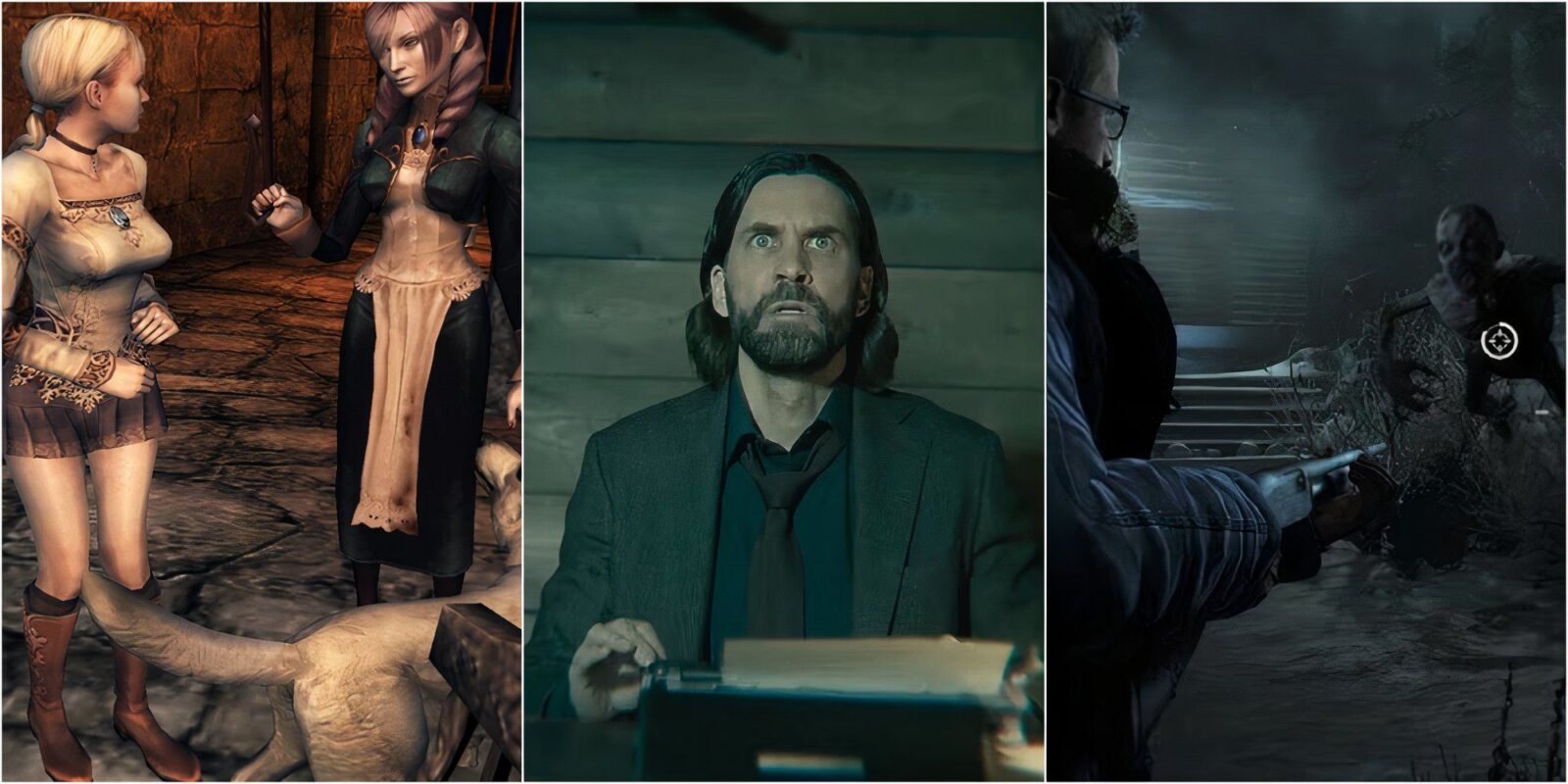













Leave a Reply